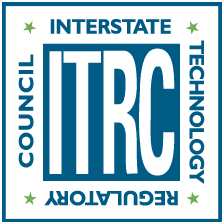| CSM requirement | Status | Required action |
| Facility | ||
| Identify current and historical structures (e.g., buildings, drain systems, sewer systems, underground utilities) | ||
| Identify process areas, including historical processing areas (e.g., loading/unloading, storage, manufacturing) | ||
| Identify current and historical waste management areas and activities | ||
| Other | ||
| Land use and exposure | ||
| Identify specific land uses on the facility and adjacent properties | ||
| Identify beneficial resources (e.g., groundwater classification, wetlands, natural resources) | ||
| Identify resource use locations (e.g., water supply wells, surface water intakes) | ||
| Identify subpopulation types and locations (e.g., schools, hospitals, day care centers) | ||
| Identify applicable exposure scenarios (e.g., residential, industrial, recreational, farming) | ||
| Identify applicable exposure pathways (e.g., contaminant sources, releases, migration, mechanisms, exposure media, exposure, routes, receptors) | ||
| Other | ||
| Physical features | ||
| Identify topographical features (e.g., hills, gradients, surface vegetation, or pavement) | ||
| Identify surface water features (e.g., routes of drainage ditches, links to water bodies) | ||
| Identify surface geology (e.g., soil types, soil parameters, outcrops, faulting) | ||
| Identify subsurface geology (e.g., stratigraphy, continuity, connectivity, hydraulic conductivity) | ||
| Identify hydrogeology (e.g., water-bearing zones, hydrologic parameters, impermeable strata, direction of groundwater flow, preferential flow paths) | ||
| Identify existing soil boring and monitoring well logs and locations | ||
| Other |
| CSM requirement | Status | Required action |
| Release information | ||
| Identify potential sources of releases | ||
| Identify potential COCs associated with each potential release | ||
| Identify confirmed source locations | ||
| Identify confirmed release locations | ||
| Identify existing delineation of release areas | ||
| Identify distribution and magnitude of COPCs and COCs | ||
| Identify migration routes and mechanisms | ||
| Identify fate and transport modeling results | ||
| Other | ||
| Risk management | ||
| Summarize the risks | ||
| Identify impact of risk management activities on release and exposure characteristics | ||
| Identify performance monitoring locations and media | ||
| Identify contingencies in the event performance monitoring criteria are exceeded | ||
| Other | ||
| Cleanup | ||
| Identify study options | ||
| Identify study requirements | ||
| Identify cleanup options | ||
| Identify cleanup requirements | ||
| Other |


